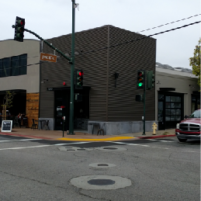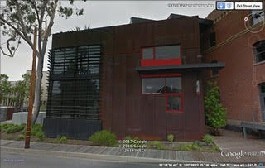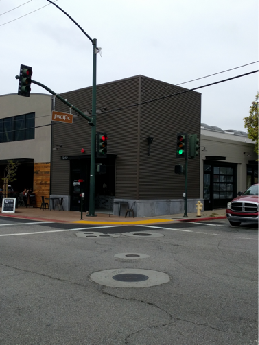Are fleeting architectural fads marring SLO?
March 20, 2017
 By David Brodie, Allan Cooper, Sandra Lakeman, Jim Montero, Judy Rowe, Elbert Speidel and Mary White
By David Brodie, Allan Cooper, Sandra Lakeman, Jim Montero, Judy Rowe, Elbert Speidel and Mary White
We have recently noticed that black and middle gray buildings are sprouting up all over San Luis Obispo. We are particularly concerned as fashion (unless it’s clothing which has a short life span) should not play a role in the built environment.
We are architects and former architecture professors who have had an association with San Luis Obispo over the years. We would like to put forth a number of arguments opposing the use of black and middle gray on buildings particularly in downtown San Luis Obispo.
Black and middle gray look out of place in the context of downtown San Luis Obispo. Architects should adhere to our Community Design Guidelines and use color creatively, exploring subtle variations on the existing, predominantly light color palette.
Climate change will demand much lighter colors for the following reasons:
a) Dark colors absorb and hold heat requiring cooling systems, systems that can increase our carbon footprint.
b) The reduced amount of reflective light demands more exterior and interior artificial lighting, again increasing our carbon footprint.
Darker street spaces increase security concerns and discourage the use of these spaces, particularly at night.
Darker colors and dimly lit spaces contribute to psychological depression. In western cultures the color black generally connotes fear and anger. The color white generally connotes happiness and purity (International Color Association [AIC] Study Group on Environmental Color Design [ECD], 2011).
Dimly lit spaces contribute to accidents.
Black and middle gray buildings further decrease available light during the winter months when there are already fewer daylight hours.
Dark pigmentation creates heat islands making our streets unpleasantly hot in the summer months and this is compounded by the fact that summer temperatures are rising precipitously.
It may be useful to look at examples of black and middle gray buildings here in San Luis Obispo and elsewhere:
Railroad Square neighborhood
Broad Street neighborhood
Soot-covered buildings in central England and Europe











The comments below represent the opinion of the writer and do not represent the views or policies of CalCoastNews.com. Please address the Policies, events and arguments, not the person. Constructive debate is good; mockery, taunting, and name calling is not. Comment Guidelines